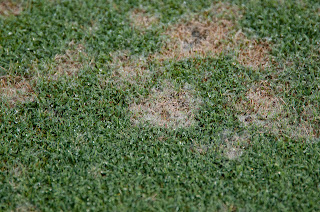This year, homeowners should make conserving water one of the most important environmental actions they take at home. According to the EPA's WaterSense publication, “One of the best ways to save energy across the country and in our own home is to use water more efficiently.”
Katie Dubow of Garden Media Group lends advice on easy ways to save water at home. Not to mention how it will help cut utility bills.
Photo: tympsy/Flickr
“100 Ways to Conserve” offers tips
for preserving this natural resource when landscaping - since it accounts
for between 30-70% of water used daily in American homes, depending on the
region and season.
·
Don’t water your lawn on windy days when most of the water blows
away. Also note: trickling or cascading fountains lose less water to
evaporation than those spraying water into the air.
·
Water your plants deeply,
but less frequently, to encourage deep root growth and drought tolerance. More
plants die from over-watering than under-watering. Set a kitchen timer when
watering your lawn or garden to remind you when to stop or redirect the water.
A running hose can lose up to 10 gallons/ min
·
Check the root zone of your lawn or garden for moisture before
watering. If it’s still moist 2-3 inches under the soil surface you have enough
water. Install a rain sensor on your irrigation controller so your system won’t
run when it’s raining. Use a rain gauge, or empty tuna can, to track rainfall
on your lawn. Then reduce your watering accordingly. A can of tuna also
measures sprinkler output. 1in of water on 1sq ft of grass is 2/3 of a gallon
of water.
·
Next time you add or replace a flower or shrub, choose a native, low-water-use
plant like those from American Beauties for
year-round landscape color, and save up to 550 gallons a year
For other easy ways to save water in and around the house,
check out the graphic home tour navigator at www.H2ouse.net to target
room-specific conservation ideas.
And, use this tool on the EPA’s
website to calculate the savings you would achieve by using water
saving products.
Katie
McCoy Dubow is creative officer at Garden Media Group, a public relations firm that specializes in
the lawn and garden industry. Located in
Kennett Square, Garden Media offers innovative PR services designed to make
their clients popular! For more tips
like this, visit their blog.










